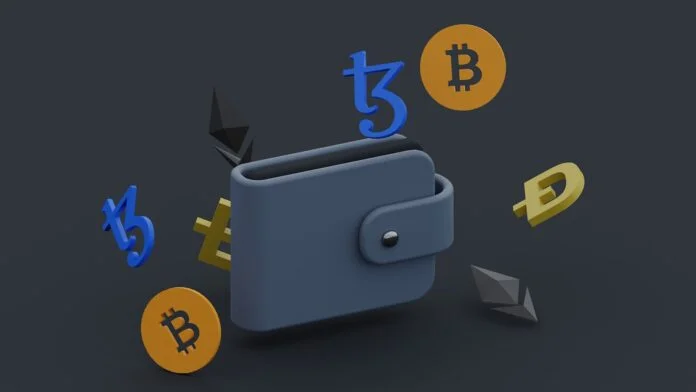Web3 wallets play a crucial role in the decentralized web. They allow users to manage their digital assets securely, interact with dApps, and participate in blockchain networks. Unlike traditional wallets, Web3 wallets give users complete control over their private keys and make it easy to integrate with different blockchain networks.
Understanding Web3 Wallets
A digital wallet that can hold various digital assets, including Non-fungible tokens (NFTs), is called a web3 wallet. It is also called a “crypto wallet” and serves as a means to access the web3 economy, enabling users to engage with Dapps.
Non-custodial Web3 wallets allow users to store digital assets without relying on a third party; This also means that users can maintain their privacy and obscurity, as there is no need for KYC/AML.
This wallet is owner-controlled, Which means that the owner has complete authority over it. However, custodial wallets are secured by a centralized authority, such as centralized exchanges, and are not compatible with web3 platforms.
In Web3, a user’s identity is linked to their Web3 wallet, which they use to access the Dapp. This method improves the conventional login process that involves email and password authentication. Web3 wallets offer anonymity, but users can associate their identity with a public wallet.
Categories Of Web3 Wallet
There are several types of Web3 wallets, each offering different levels of security, accessibility, and functionality. Here are the main types,
1. Browser Extensions
These wallets are browser add-ons that integrate with popular web browsers like Chrome or Firefox. They provide a user-friendly interface and seamless integration with Web3 applications. Examples include MetaMask, Trust Wallet, and Brave Wallet.
2. Mobile Wallets
Mobile wallets are designed for smartphones and tablets, providing users with the ability to manage their digital assets on the go. These wallets often have built-in browser capabilities, allowing users to interact with Web3 applications directly. Examples include Coinbase Wallet, Argent, and Rainbow.
3. Hardware Wallets
Hardware wallets offer the highest level of security by storing private keys offline on dedicated devices. They are typically USB or Bluetooth-connected devices and require physical confirmation for transactions. Popular hardware wallets include Ledger, Trezor, and KeepKey.
4. Desktop Wallets
These wallets are software applications installed on desktop or laptop computers. They provide users with full control over their private keys and offer enhanced security compared to web-based wallets. Examples include Exodus, Atomic Wallet, and MyEtherWallet.
5. Paper Wallets
Paper wallets involve printing out private keys and addresses on physical paper. While they are highly secure from online threats, they can be vulnerable to physical theft or damage. Paper wallets are often used for long-term storage and as a backup method.
6. Cold Wallets
Cold wallets are offline storage devices or paper wallets that securely store cryptocurrencies. They provide an extra layer of protection against hacking and online threats by keeping private keys offline.
How To Develop A Web3 Wallet?
Here are some key steps to develop a Web3 wallet,
Choose A Development Platform
Determine the platform on which you want to build your Web3 wallet. Common choices include web browsers, mobile platforms (Android/iOS), or desktop applications.
Integrate Blockchain Network Support
Select the blockchain networks you want your Web3 wallet to support. Utilize blockchain-specific libraries (such as Ethereum’s Web3.js) to interact with the chosen networks. Implement functions to create wallets, check balances, send/receive transactions, and interact with smart contracts.
Implement User Interface
Design an intuitive and user-friendly interface for your Web3 wallet. Include features such as account creation, wallet backup, transaction history, and dApp integration.
Implement Wallet Features
Develop core functionalities such as creating accounts, generating private/public key pairs, signing transactions, and interacting with smart contracts.
Write Smart Contracts
Smart contracts are contracts that execute themselves according to pre-set rules stored in the blockchain. They facilitate transactions that are automated and secure. It is important to use programming languages such as Solidity when writing these contracts to ensure transparency and build trust in decentralized applications and wallet functions.
Using API’s
In web3 wallets, the API serves as a mediator between the front-end interface and the underlying code. It allows for the modification of records and the implementation of commands. Developers can use advanced programming languages to utilize APIs in web3 wallets.
Testing And Deployment
To ensure that your wallet application is both functional and secure, it’s important to thoroughly test it using both manual and automated methods. Once testing is complete, deploy your wallet to a suitable web server or decentralized hosting platform such as IPFS.
Ongoing Maintenance and Updates
It is important to regularly keep an eye on your wallet’s security and make sure it is up to date. You should also consider implementing any new features or improvements based on feedback from users.
Summing Up
In conclusion, A Web3 wallet is a type of digital wallet that allows users to safely store and take control of their decentralized digital assets, such as cryptocurrencies and NFTs, using the Web3 technology stack. To build a Web3 wallet, developers can leverage technologies like blockchain, smart contracts, and decentralized networks. Make your Web3 wallet today and empower users with control over their digital assets in a decentralized ecosystem.

